Showing all 16 results
-
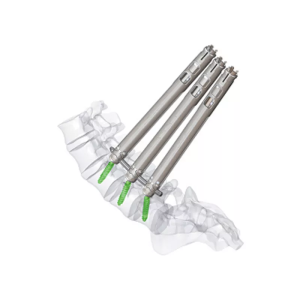
5.5 Minimally Invasive Pedical Screw
Read moreWhat is 5.5 Minimally Invasive Pedical Screw System?
The 5.5 Minimally Invasive Pedicle Screw System is a medical device used in spinal surgery to provide stabilization and support to the spine. It is a type of pedicle screw system that is designed to be used in minimally invasive surgery (MIS) techniques, which involve smaller incisions and less disruption to the surrounding tissues compared to traditional open surgery.
The 5.5 Minimally Invasive Pedicle Screw System is typically made of titanium, a biocompatible metal that is strong, lightweight, and able to integrate with bone. The system consists of screws that are inserted into the pedicles (small bony projections on the back of the vertebrae) of the spine, and rods that are used to connect the screws and stabilize the spine.
The 5.5 Minimally Invasive Pedicle Screw System is available in different sizes and configurations to accommodate the specific needs of each patient and each surgical procedure. It is often used to treat a variety of spinal conditions, including degenerative disc disease, spinal stenosis, scoliosis, and spinal fractures.
-
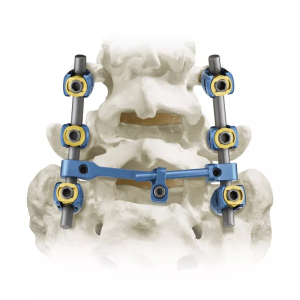
5.5 Spinal Pedicle Screw System
Read more5.5 Spinal Pedicle Screw System
The 5.5 spinal pedicle screw system is a medical implant system used in spinal surgeries for stabilization and fusion of the spine.
It consists of pedicle screws, connecting rods, locking caps, and other hardware that are used to create a stable construct in the spine.
The 5.5 refers to the diameter of the screw, which is 5.5 mm. This system is designed to provide superior fixation and stability for spinal fusion procedures, which can help to reduce the risk of complications and improve patient outcomes.
It is commonly used in the treatment of conditions such as degenerative disc disease, spinal stenosis, and scoliosis.
-
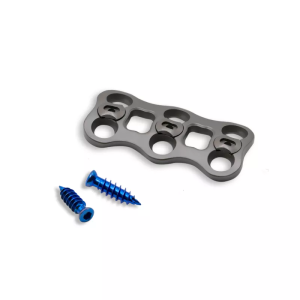
Anterior Cervical Plate-I
Read moreWhat is Anterior Cervical Plate System?
Anterior cervical plate system is a type of medical implant used in cervical spine surgery. It is designed to provide stabilization and fusion of the cervical spine following cervical discectomy and decompression procedures.
The system consists of a metal plate that is attached to the front of the cervical spine with screws, and is typically made of titanium or stainless steel. The plate provides stability to the spine while the bone graft used in the procedure fuses the vertebrae together over time.
Anterior cervical plate systems are used to treat a range of cervical spine conditions, including degenerative disc disease, herniated discs, spinal stenosis, and cervical fractures.
-
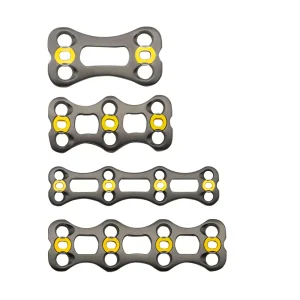
Anterior Cervical Plate-II
Read moreWhat is Anterior Cervical Plate System?
Anterior cervical plate system is a type of medical implant used in cervical spine surgery. It is designed to provide stabilization and fusion of the cervical spine following cervical discectomy and decompression procedures.
The system consists of a metal plate that is attached to the front of the cervical spine with screws, and is typically made of titanium or stainless steel. The plate provides stability to the spine while the bone graft used in the procedure fuses the vertebrae together over time.Anterior cervical plate systems are used to treat a range of cervical spine conditions, including degenerative disc disease, herniated discs, spinal stenosis, and cervical fractures.
-

Anterior Thoracic Plate System
Read moreWhat is Anterior Thoracic Plate System?
Anterior thoracic plate system is a type of spinal implant used to stabilize and fuse the thoracic spine (middle and upper back) after a spinal fracture, deformity, or injury. It consists of a plate made of metal (usually titanium) that is placed on the front (anterior) surface of the spine and held in place with screws. The plate helps to support the spine and promote bone growth to fuse the damaged vertebrae together.
-

Anterior Thoracolumbar Plate System
Read moreWhat is Anterior Thoracolumbar Plate System?
Anterior thoracolumbar plate system is a medical device used in spinal surgery. It is designed to stabilize the spine and provide support for fusion in the thoracolumbar region of the spine, which is the area between the lower part of the thoracic spine and the upper part of the lumbar spine. The system consists of a plate that is fixed to the anterior (front) aspect of the spine using screws, and is made of materials such as titanium or stainless steel. The plate and screws work together to hold the spine in place, allowing for fusion to occur between the adjacent vertebrae.
-

Cervical cage with screw
Read moreCervical cage with screw
A cervical cage with screw is a medical device used in cervical spine surgery to provide support and stability to the vertebrae. It is used in cases where the cervical spine is damaged or degenerated, causing pain, instability, or compression of the spinal cord or nerves.
The cervical cage is a small implant made of biocompatible materials such as titanium or a polymer material, designed to be inserted between two adjacent cervical vertebrae. The cage is typically filled with bone graft material to encourage the growth of new bone tissue and promote fusion between the two vertebrae.
The screws used with the cervical cage are used to secure the cage in place and stabilize the spine. They are usually made of titanium and are screwed into the adjacent vertebrae. The screws can be designed in different lengths and diameters to fit the specific needs of the patient.
Cervical cage with screws is often used in cervical fusion surgery to treat conditions such as degenerative disc disease, herniated discs, spinal stenosis, and spondylolisthesis. The procedure is performed under general anesthesia, and the recovery time can vary depending on the extent of the surgery and the patient’s overall health.
-
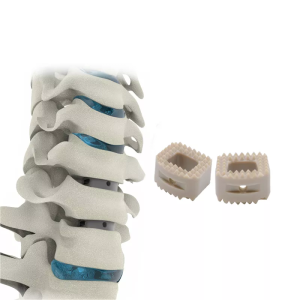
Cervical Peek Cage
Read moreWhat is Cervical Peek Cage?
A Cervical Peek Cage is a medical device used in cervical spinal fusion surgery to treat a variety of conditions that affect the neck and cervical spine. The device is designed to promote fusion between two adjacent vertebrae, which helps to restore stability to the spine, alleviate pain, and reduce pressure on the nerves.
The Cervical Peek Cage is typically made of a biocompatible material called polyetheretherketone (PEEK), which is a strong and durable polymer that is widely used in medical devices. The PEEK material is radiolucent, which means that it does not interfere with X-ray or other imaging techniques, allowing doctors to monitor the healing process after surgery.
-

Cervical Peek Cage-II
Read moreWhat is Cervical Peek Cage?
A Cervical Peek Cage is a medical device used in cervical spinal fusion surgery to treat a variety of conditions that affect the neck and cervical spine. The device is designed to promote fusion between two adjacent vertebrae, which helps to restore stability to the spine, alleviate pain, and reduce pressure on the nerves.
The Cervical Peek Cage is typically made of a biocompatible material called polyetheretherketone (PEEK), which is a strong and durable polymer that is widely used in medical devices. The PEEK material is radiolucent, which means that it does not interfere with X-ray or other imaging techniques, allowing doctors to monitor the healing process after surgery.
-
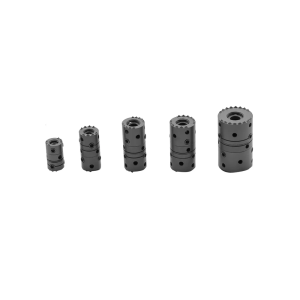
Expandable Titanium Cage
Read moreWhat is Expandable Titanium Cage?
An expandable titanium cage is a medical device used in spinal fusion surgery.
It is designed to be inserted into the intervertebral space between two adjacent vertebrae to restore the height and alignment of the spine. The cage is made of titanium, which is a biocompatible material that is strong and lightweight.
The expandable feature of the cage allows for a customizable fit to the specific patient’s anatomy and provides a secure hold to promote bone growth and fusion.
-
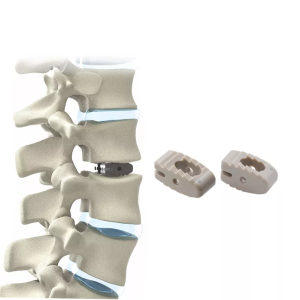
PLIF Peek Cage
Read moreWhat is PLIF Peek Cage?
PLIF (Posterior Lumbar Interbody Fusion) Peek Cage is a medical device used in spinal surgery to treat conditions such as spinal instability, spondylolisthesis, and degenerative disc disease.
It is an interbody fusion cage that is placed between the vertebral bodies of the spine after the removal of a damaged disc. The PLIF Peek Cage is made of polyether ether ketone (PEEK), a biocompatible material that provides stability and support to the spine while promoting bone growth and fusion.
-
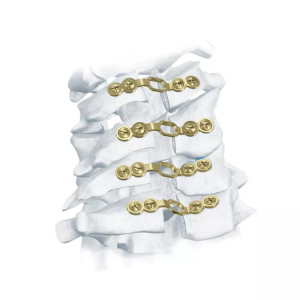
Posterior Cervical Laminoplasty System
Read moreWhat is Posterior Cervical Laminoplasty System?
Posterior cervical laminoplasty is a surgical technique used to relieve pressure on the spinal cord in the neck region.
It involves creating a hinge on one side of the vertebrae and opening up the other side like a door, which allows more room for the spinal cord to pass through.
The posterior cervical laminoplasty system consists of a set of implants and instruments that are used to perform this procedure. The system typically includes plates, screws, and other devices that are used to stabilize the vertebrae after they have been opened up.
This helps to maintain the correct alignment of the spine and prevent further compression of the spinal cord.
-
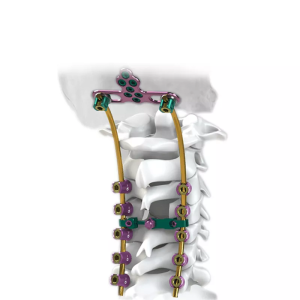
Posterior Cervical Screw System
Read moreWhat is Posterior Cervical Screw System?
Posterior Cervical Screw System is a medical device used in spinal surgeries to stabilize the cervical spine (neck region) by fixation of the spinal column with screws and rods.
The system consists of pedicle screws, lateral mass screws, hooks, and rods that are used to form a construct to stabilize the spine.
The posterior cervical screw system is used to treat various spinal conditions such as degenerative disc disease, spinal stenosis, herniated discs, and spinal fractures.
-
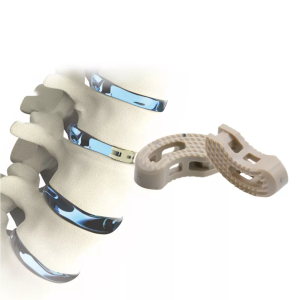
T-PAL Peek Cage
Read moreWhat is T-PAL Peek Cage?
T-PAL Peek Cage is a medical implant used in spinal surgeries. It is a cage-shaped device made of polyetheretherketone (PEEK), a biocompatible thermoplastic polymer material that is known for its high strength and radiolucency.
The cage is designed to be inserted into the intervertebral space of the spine to provide stability and support, and to promote fusion between adjacent vertebrae.
T-PAL Peek Cage is typically used in anterior cervical discectomy and fusion (ACDF) procedures, which involve removing a damaged disc in the neck and replacing it with the cage and bone graft to promote fusion.
-

Titanium Mesh Cage
Read moreWhat is Titanium mesh cages?
Titanium mesh cages are medical devices used in spinal fusion surgery to provide structural support and promote bone growth in the affected area.
They are typically made of titanium, a strong and lightweight metal that is biocompatible with the human body. The mesh design allows for bone to grow through the cage and fuse with the adjacent vertebral bodies, creating a solid fusion mass.
Titanium mesh cages are used in a variety of spinal fusion procedures, including anterior cervical discectomy and fusion (ACDF) and lumbar interbody fusion (LIF).
-
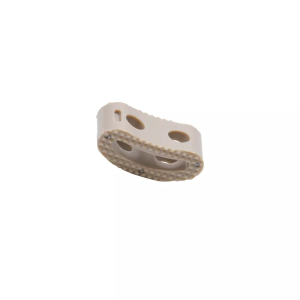
TLIF Peek Cage
Read moreWhat is TLIF Peek Cage?
TLIF Peek Cage is a type of spinal fusion device that is used in a surgical procedure called Transforaminal Lumbar Interbody Fusion (TLIF). TLIF Peek Cage is designed to replace a damaged or removed intervertebral disc in the lumbar spine and promote fusion between the adjacent vertebrae. The cage is made of a type of plastic called polyetheretherketone (PEEK), which has been shown to be biocompatible and have good mechanical properties.
During the TLIF procedure, the surgeon approaches the spine through a small incision in the back and removes the damaged disc. The TLIF Peek Cage is then inserted into the empty disc space and filled with bone graft material. The cage provides support and stability to the vertebral column, while the bone graft material promotes fusion between the adjacent vertebrae.
